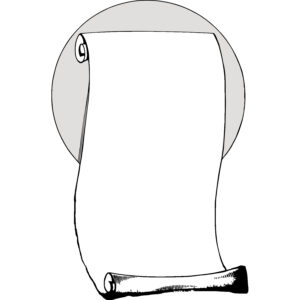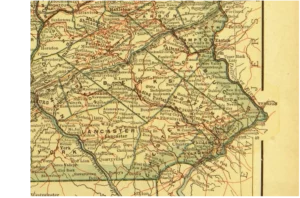
Websites convey brand, value, and call to action. Continuous improvement will ensure you balance these essentials with shifting tastes and trends, but the “how” is not always straightforward. This is especially true for businesses and organizations that use a website as one of several touch-points in the customer journey. Everybody with a website wants to find effective ways to streamline their processes and deliver outstanding results. That’s where design and content sprints come into play.
These sprints are dynamic and collaborative workshops that empower teams to break free from traditional project timelines in favor of a more agile, iterative, and focused workflow. If you’re looking to quickly generate and implement ideas for your web presence, but not sure where to start, give this a try with your team.
What We'll Cover
What is a Design Sprint?
A design sprint is a structured and collaborative workshop aimed at solving complex problems and rapidly developing innovative solutions. Its primary goal is to condense months of work into just a few days, typically five consecutive days. This intensive process brings together members across your business to work together in a focused and efficient manner.
During a design sprint, diverse team members contribute their expertise, perspectives, and creativity to tackle complex challenges. This inclusivity ensures that solutions are well-rounded and consider various angles. Moreover, the structured nature of the sprint keeps everyone focused on the end goal, preventing tangents and distractions.
By the end of the sprint, teams emerge with validated prototypes and actionable insights, ready to move forward with confidence. In essence, a design sprint isn’t just about speed; it’s about harnessing collective intelligence to rapidly iterate and innovate, driving meaningful progress within a condensed timeframe.
It’s is more than just a meeting; it’s a strategic approach to problem-solving that emphasizes collaboration and efficiency. By compressing the timeline of product development into a concise period, ideas can be swiftly generated, tested, and refined. This condensed timeframe not only fosters creativity but also instills a sense of urgency, motivating participants to prioritize tasks and make decisions promptly.
Why it’s great
We’ve covered at a high level what design sprints are and why we like them. But let’s delve a little further into the benefits of trying a design sprint for your next team workshop. We hope with these in mind, you’ll agree it’s worth trying at least once:
- Streamlined Process: Content creation often involves multiple stages, from ideation to final production. A design sprint condenses these stages into a focused timeframe, allowing teams to move swiftly. By following a structured process, you can avoid unnecessary delays and ensure that content creation remains efficient.
- User-Centered Approach: Design sprints emphasize empathy for users. When creating content, understanding your audience is crucial. By incorporating user research and feedback early in the sprint, you can tailor your content to meet their needs. This user-centered approach ensures that your messaging resonates with the intended audience.
- Reduced Risk of Misalignment: Without a clear process, content creation can become disjointed. Teams might produce content that doesn’t align with the overall brand voice or messaging. A design sprint brings stakeholders together, aligning their perspectives and ensuring that everyone contributes to a cohesive content strategy.
- Collaboration and Creativity: Content creation benefits from diverse viewpoints. During a design sprint, writers, designers, marketers, and other team members collaborate intensively. This cross-functional approach sparks creativity and encourages innovative content ideas. By pooling expertise, you can create content that stands out.
- Impactful Content Strategy: The sprint process forces teams to make decisions quickly. As a result, you’ll arrive at a content strategy that’s well-defined and impactful. Whether it’s blog posts, product descriptions, or landing pages, the alignment achieved during the sprint ensures that your website’s content serves its purpose effectively.
Steps in a Design Sprint
A design sprint typically involves a team of ten or fewer members and is structured into five key phases over five days. It is an intensive process aimed at solving critical problems through design, prototyping, and testing ideas.
Day 1: Understand
The sprint begins with a deep dive into understanding the problem at hand, defining the project’s goals, and ensuring that all team members are aligned on the objectives.
For websites: Start by asking fundamental questions such as, “What is the objective of this website or feature?”. Or, ask “How is the current solution falling short?”. This step focuses on uncovering user pain points and determining what problems need solving. It mirrors the ‘Understand’ phase in a traditional sprint, where the team gains clarity on user needs, market requirements, and project constraints.
Days 2 and 3: Diverge and Converge
The team moves into ideation by first diverging, brainstorming a broad range of creative solutions without limitations. This is where out-of-the-box thinking is encouraged. Then, the team converges, analyzing and filtering these ideas to focus on the most viable ones.
For websites: Here, the team should generate diverse content and design ideas that align with the objectives identified on Day 1. For instance, consider different formats like blog posts, videos, infographics, interactive tools, or new navigation structures. Use brainstorming techniques such as mind mapping or storyboarding to explore innovative approaches. After generating the ideas, evaluate and refine them based on feasibility, alignment with user needs, and the overall strategy. It’s important to alternate between divergence and convergence a couple of times to ensure a thorough evaluation before committing to a concept.
Day 4: Commit and Prototype
On Day 4, the focus shifts to creating a prototype. The team takes the chosen solution and builds a simple, interactive model that can be tested. This prototype allows stakeholders and users to experience the potential solution in a tangible way.
For websites: Depending on the scope of the changes, this could involve creating new content for feedback or developing a visual prototype of a new site layout. If you’re unsure how users will respond to a new feature or design, create a separate version of the site with the proposed change. This prototype can range from a wireframe or mockup for layout changes to fully developed content for user feedback. The goal is to present something concrete for users to interact with, allowing you to gather meaningful insights before committing to the full implementation.
Day 5: Test and Analyze
The sprint concludes with a testing phase where the team gathers feedback from real users interacting with the prototype. This validation step is crucial as it reveals how effectively the proposed solution addresses the identified problems.
For websites: Implement A/B testing to compare the new design or content with the current version, tracking how users engage with each option. Use site analytics to measure user interactions, such as bounce rates, time spent on page, and conversion rates. For content, monitor metrics such as social shares, click-through rates, and engagement levels. The testing phase will help identify what works, what doesn’t, and where further adjustments may be needed before a full-scale launch.
Sprinting to success
By applying a design sprint to content creation, you can streamline the process, ensure a user-centered approach, and reduce the chances of creating content that may not resonate with your target audience. It also fosters collaboration among team members. The process helps to align everyone’s efforts toward a cohesive and impactful content strategy for your website.
In summary, a design sprint applied to content creation not only accelerates the process but also ensures that your content speaks directly to your audience, fosters collaboration, and contributes to a cohesive content strategy. It is like a high-speed train for innovation, allowing teams to collaborate intensely, iterate quickly, and arrive at effective solutions in record time.





